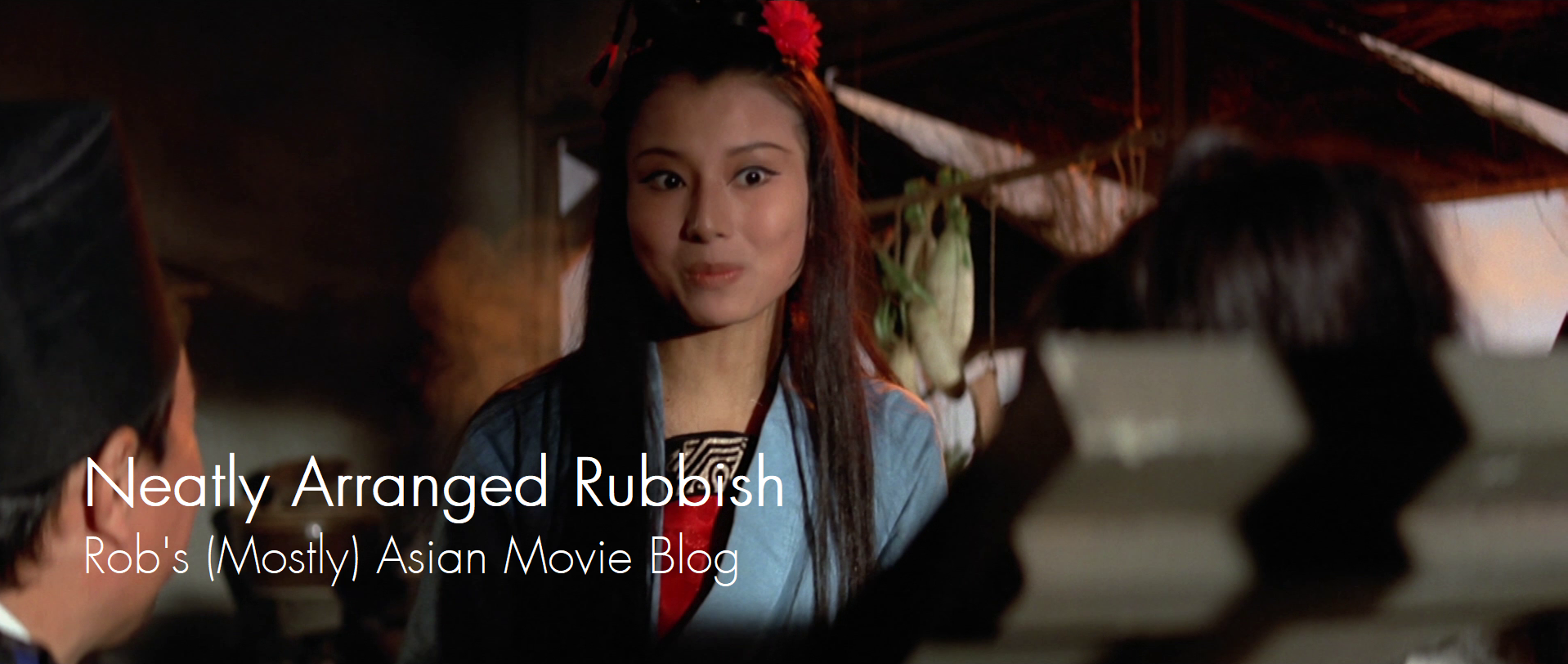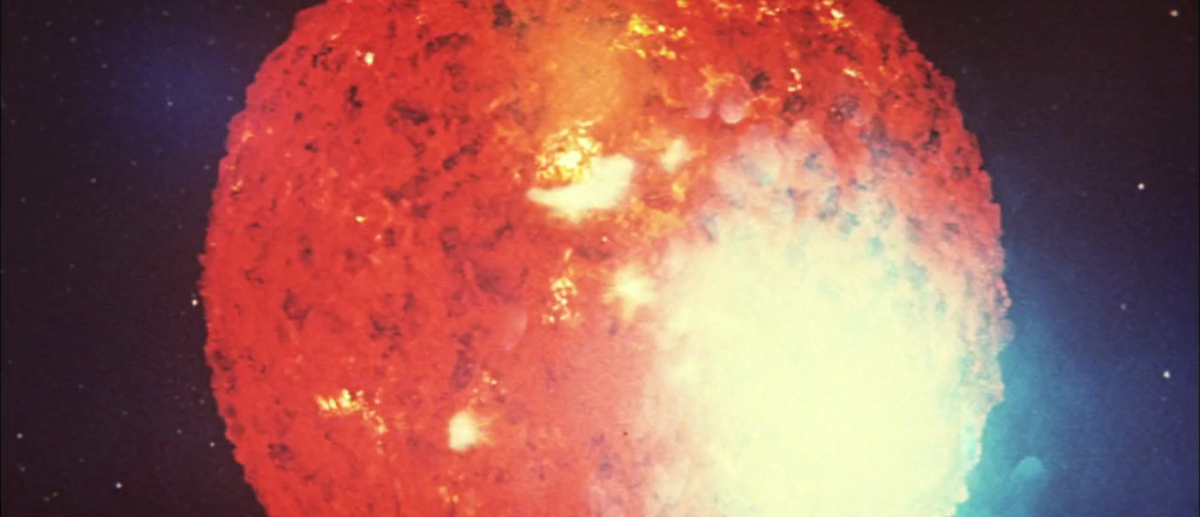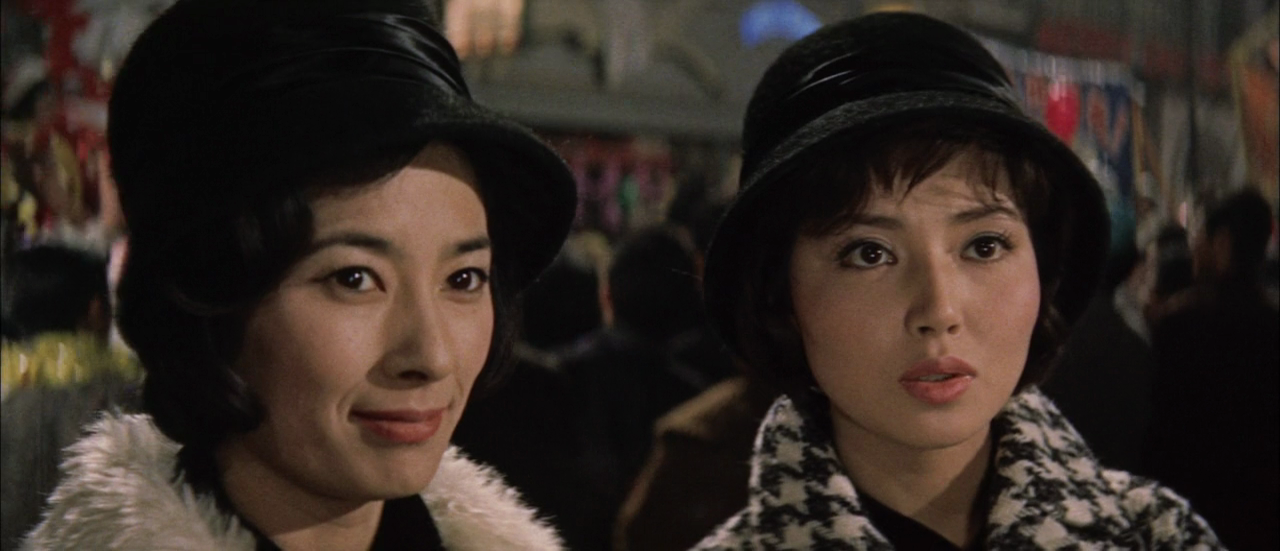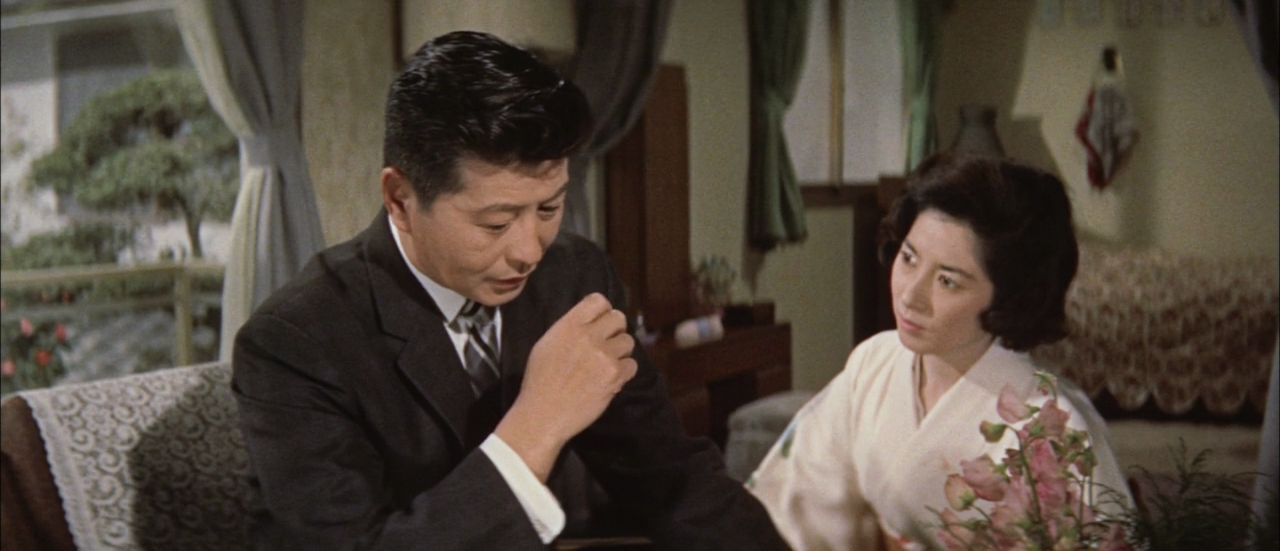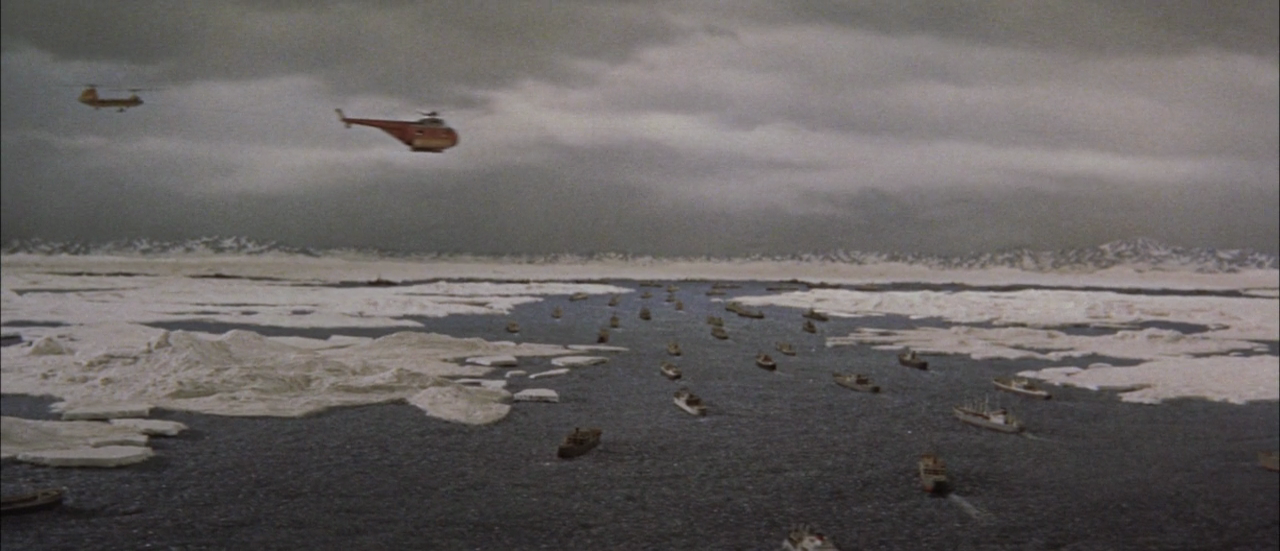Last Updated on October 6, 2020 by rob
The Earth learns that an approaching planetoid named Gorath is on a collision course. Dr.Tazawa (Ryo Ikebe) persuades the United Nations to co-operate in the construction of a massive nuclear engine at the South Pole whose thrust can literally push the Earth out of Gorath’s path. But a space mission to gather data on Gorath leaves astronaut Kanai (Akira Kubo) unable to recognise girlfriend Taiko (Kumi Mizuno) and at the South Pole the heat of the atomic engines releases a giant prehistoric walrus from deep freeze!
Along with Mothra, Matango and The Human Vapor this is my favourite Ishiro Honda movie. It’s SF but it hews to the template established by the director’s monster movies and it distills all that is enjoyable about the genre he pioneered into one smooth and quite polished package. A likeable cast and good pacing also mean the director’s heartfelt plea for co-operation between nations doesn’t get bogged down – as it sometimes does in his other movies – by long-winded scenes of bureaucratic speechifying. It helps that everyone here from top level scientists and diplomats to an amusingly complacent taxi driver and mordant barfly get to weigh in on the significance of Gorath’s approach.
There’s more humour too. The Sonoda family’s teenage son gets some hilarious lines; refused a whiskey by the adults he declares, “If Gorath’s going to strike the Earth I should be allowed at least one drink!” It’s one of the film’s nicest touches that it’s this kid whose fanciful musings about using explosives on Gorath sparks the idea in Dr.Tazawa’s mind that ultimately leads to Earth’s salvation. Epitomised by its group of cadet astronauts led by Kanai (frustrated at not being given the go ahead for investigating Gorath, the lads hijack a helicopter and vent their frustrations in an aerial sing-song over Tokyo!) there’s a boisterous, youthful optimism coursing through Gorath that contrasts really well with the film’s grimmer aspects. Honda’s oft repeated message that if humanity were to just put aside its differences and co-operate then there’d be no difficulty that couldn’t be overcome has rarely seemed so infectious.
Yet Honda isn’t above acknowledging the generation gap here. It’s quite a surprise when, after the successful ignition of the South Pole engine, Tazawa’s associate Dr.Kono (Ken Uehara) bluntly states that no one at the UN has any faith, short of divine intervention, that the Earth can be saved. “The younger generation.. just can’t understand that”, he says. It’s a sobering moment but the bridge between two generations turns out to be Dr.Tazawa, himself exhausted and reduced to tears at this point but given the strength to carry on after a heartfelt pep talk from girlfriend Tomoko. Speaking of which I really liked the two female leads, Yumi Shirakawa as Tomoko and Kumi Mizuno as Taiko. They’re both cute as buttons and seem more realistically drawn than their American contemporaries. Perhaps because they’re not simply reduced to being homemakers or sobbing when their men go off.
As competent as the character stuff is it’s the disaster spectacle we’re all here for and Gorath doesn’t disappoint on that front, offering a variety of spectacular and ambitious setpieces on earth, in the air and in space, plus one genuine monster. It seems evident that Toho spent more than usual on this and under the direction of special effects expert Eiji Tsuburaya the result is not just one of the best looking but one of the best, Japanese disaster movies. Initially, Gorath is just a glowing red orb but the closer it gets to Earth the more we see it sucking in debris and growing in size, its surface roiled by explosions, sparks and bursts of flame. One especially nice touch has Saturn’s rings being sucked into Gorath’s mass as the planetoid passes nearby!
The meticulously detailed model sequences of the nuclear engines under construction at the South Pole, with its icebreakers and cranes busily unloading cargo onto conveyor belts while helicopters fly over – aided by a thumping Kan Ishii score – is likely to thrill anyone who ever got a kick out of putting together an Airfix model kit. It really doesn’t matter that the models mostly look like miniatures because something about them (which includes some quite convincing back projection work with real people in the foreground) stirs the blood. One of the many pleasing aspects here is that the film exudes a genuine wonder for space exploration. To that end there’s plenty of action in space including a well done spacewalk from a rocket ship to rescue an unconscious Kanai, adrift in his shuttle after a terrifying close encounter with Gorath, which blends miniature work with live action to good effect.
This is a world (set in 1982!) in which the UN has established a succession of manned satellites stretching out into deep space. As Gorath closes in we see the satellites retreating to land at a spaceport on Earth. Honda successfully creates a detailed world here that seems busy and convincing beyond just the threat of Gorath. And as we near the climax with everything beginning to look a touch too predictable the film throws in a wonderfully imaginative flourish with the arrival of a giant prehistoric walrus which begins wreaking havoc at the South Polar base. Seems the heat from the nuclear engines thawed it out from deep beneath the ice! You share the wistfulness of Dr. Kono and Dr.Tazawa as they’re forced to kill it with their aircraft’s laser even though they’d like to let it live.
There’s a palpable ambition and confidence through Gorath, so much so that Honda can cross-cut between Kanai regaining his memory while watching Gorath on TV and the floods, earthquakes and hurricanes raging outside, and sell both with equal conviction. The scenes of a flooded Tokyo with the tops of office buildings and pagoda’s sticking up out of the waves are so good they almost don’t look like models. So persuasive is the film’s climactic triumph that even the scenes at the South Polar base as humble Dr.Tazawa finds himself the centre of a frenzy of cheers, hugs and backslapping from the international crew he’s been working with feel really well earned.
